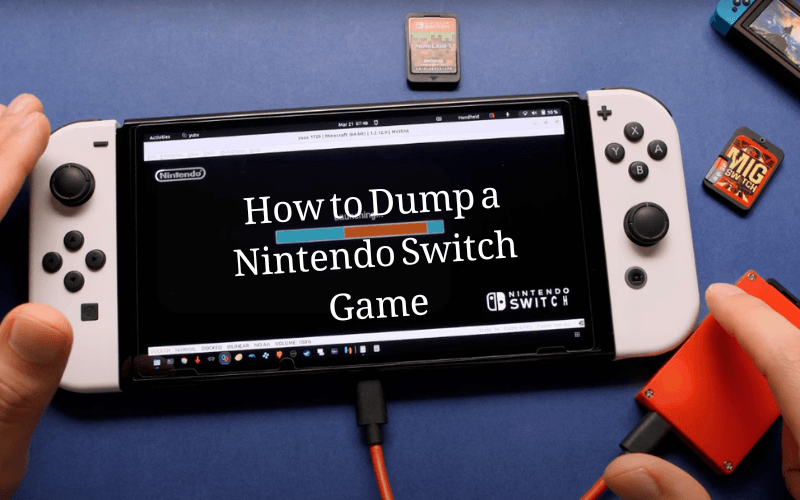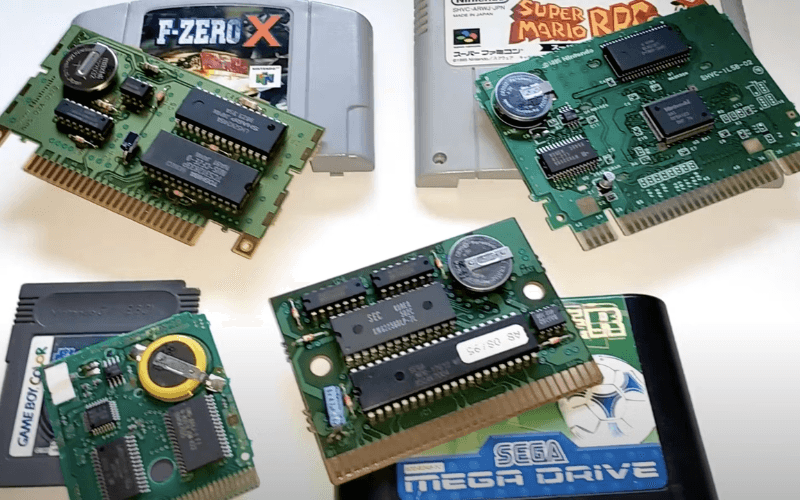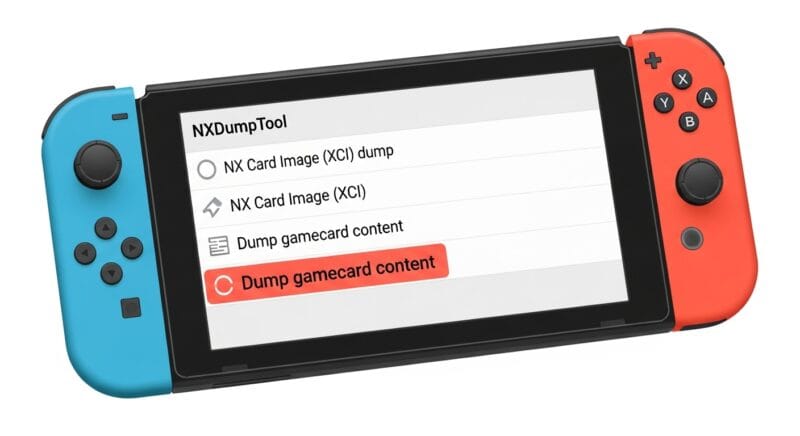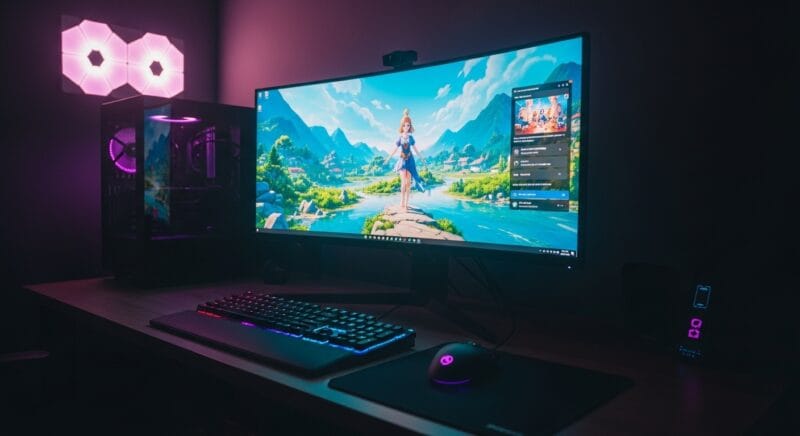The process of “dumping” Nintendo Switch games—creating a digital copy from a game you own—is a popular topic among tech-savvy gamers. It’s the key to unlocking superior performance on PC emulators, exploring the vibrant world of game modding, and creating personal backups to preserve your library for years to come.
However, this process is complex and carries significant risks, including a permanent ban from Nintendo’s online services. This guide will walk you through everything you need to know about how to dump Switch games in 2025, covering the legal gray areas, the necessary tools, and the step-by-step procedures for both cartridges and digital titles.
Why Dump Your Games?
While often confused with piracy, dumping games you legally own serves several legitimate purposes for gamers who want to get the most out of their purchases.
Beyond the Console: Performance, Modding, and Preservation
The primary motivations for dumping your Switch games are rooted in enhancing and preserving your software library.

- Enhanced Performance: By running your game files on a powerful PC through an emulator, you can achieve resolutions like 4K and higher, more stable frame rates, and a dramatically improved visual experience that surpasses the Switch’s native hardware capabilities. If you’ve invested in a good gaming PC, understanding things like normal CPU temperature while gaming becomes crucial for optimal performance.
- Game Modding: Accessing a game’s core files allows a creative community to develop mods. These can range from simple texture swaps and quality-of-life improvements to entirely new content, breathing fresh life into your favorite titles.
- Digital Preservation: Physical cartridges can get damaged, and microSD cards have a finite lifespan. Furthermore, Nintendo will eventually shut down the eShop for the Switch, making it impossible to re-download digital purchases. Creating a personal backup is a proactive way to safeguard your investment against hardware failure and digital obsolescence, especially with the Nintendo Switch 2 on the horizon.
A Critical Warning on Risk and Responsibility
Dumping a Switch game requires modifying your console’s operating system, which is a direct violation of Nintendo’s policies. The core issue is the need to bypass Nintendo’s encryption (a form of DRM).
While the risk of a lawsuit for personal use is extremely low, the most probable consequence is a permanent and irreversible ban of your console from all Nintendo online services. This includes the eShop, online multiplayer, and cloud saves.
This guide is for educational purposes. Proceeding means you understand and accept the full spectrum of risk, including the potential loss of your console’s online functions.
The Legal Gauntlet: Copyright, DMCA, and Nintendo’s Terms
Navigating the decision to dump your games involves understanding a complex legal landscape where consumer rights and corporate policies clash.

The Right to an “Archival Copy” (Section 117)
In the United States, Section 117 of the U.S. Copyright Act allows the owner of a computer program (which includes video games) to make an “archival copy” for backup purposes. This is the legal foundation supporting the right to create a personal backup of a game you own to protect against damage or loss.
This right is narrow. The copy must be for personal use only and cannot be sold or distributed.
The DMCA’s Anti-Circumvention Hurdle
The Digital Millennium Copyright Act (DMCA) presents a major challenge. It makes it illegal to circumvent technological measures, like encryption, that control access to copyrighted works.
To dump a Switch game, you must use software to break this encryption. This act of circumvention is technically prohibited by the DMCA, creating a legal paradox: you may have the right to a backup, but the only method to create it is illegal.
Nintendo’s EULA: The Real Consequence
For most users, the most important document is the End-User License Agreement (EULA) you agree to when using your Switch. This contract explicitly forbids modifying the console or using unauthorized software.
The entire process of installing custom firmware and dumping games is a clear breach of this contract. This gives Nintendo the right to terminate your services via a console ban, a consequence that is separate from copyright law. The practical risk isn’t a lawsuit; it’s the ban.
Your Hardware and Key Concepts
Before you start, you must understand the hardware requirements and core concepts. The correct method depends entirely on your specific Switch model.
The Great Divide: Identifying Your Switch Model
The first step is to identify if your Switch is “unpatched” or “patched.” This determines whether you can use a software exploit or if you need to physically install a modchip.
- Unpatched V1 (“Erista”): These are the original Switch consoles sold between March 2017 and mid-2018. They have a hardware flaw that allows for an unpatchable software exploit. You can check your serial number against online databases like
ismyswitchpatched.comto see if your console is in this group. - Patched V1, V2, Lite, and OLED: All Switch models made after mid-2018, including the V2 (red box), Lite, and OLED models, have the hardware vulnerability fixed. These consoles require a hard-mod, which involves soldering a modchip onto the motherboard. This is an invasive process that requires significant technical skill and will void your warranty. The complexity is akin to advanced PC building, like learning how to replace a motherboard.
The Console-Free Path: The Cartridge Dumper
For users who only want to dump physical cartridges and don’t want to modify their console, an external cartridge dumper like the Mig Switch Dumper offers a third way. This device connects to your PC and dumps the cartridge contents directly, posing no risk to your console. However, it cannot be used for digital games, updates, or DLC.

| Switch Model(s) | Primary Method | Key Requirements | Use Cases | Risk to Console |
| Unpatched V1 (“Erista”) | Software Exploit (fusee-gelee) | RCM Jig, USB-C Cable, PC | All (Cartridges, Digital, Updates, DLC) | Low (if guides are followed) |
| Patched V1, V2, Lite, OLED | Hardware Modchip | Soldering skills or professional service | All (Cartridges, Digital, Updates, DLC) | High (Voids warranty, risk of damage) |
| All Models | External Cartridge Dumper | Mig Switch Dumper or similar | Physical Cartridges Only | None |
Your Essential Toolkit
You’ll need a few key items to get started with console modification:
- High-Capacity microSD Card: A 128 GB card is the minimum recommended, but larger is better. A high-speed (U3/V30) card will significantly reduce file transfer times.
- USB-C Cable: A quality data transfer cable to connect the Switch to a PC.
- RCM Jig: For unpatched V1 models only, this small tool forces the console into Recovery Mode.
- PC: A Windows, macOS, or Linux computer. For Apple users, knowing how to connect a Nintendo Switch to a Mac is a prerequisite.
Glossary of Core Homebrew Concepts
- CFW (Custom Firmware): Modified system software that enables advanced functions. Atmosphère is the current community standard.
- Hekate: A custom bootloader that launches before the OS, allowing you to choose between stock firmware and CFW, manage backups, and access other tools.
- RCM (Recovery Mode): A low-level maintenance mode that can be exploited on unpatched V1 consoles to inject custom code (payloads).
- Payload: A small piece of code sent from a PC to a Switch in RCM. The primary payload used is Hekate.
- emuMMC / emuNAND: A complete copy of the Switch’s system memory that runs entirely from the microSD card. This is the single most important tool for preventing a ban, as it creates a “sandbox” for all homebrew activity, leaving your console’s internal storage (sysNAND) untouched.
The Core Process: Installing Custom Firmware (A High-Level Overview)
Installing CFW is an intricate process. The exact steps can change with official Nintendo firmware updates, making static guides unreliable over time.
A Critical Disclaimer: Follow the Primary Source
This section provides a high-level overview for context. For the actual installation, you must follow the definitive, continuously updated guide at switch.hacks.guide. Using outdated video tutorials or trying from memory is the most common cause of errors.
The Three Phases of Launching CFW
The process is a sequential toolchain: you use a PC to inject a payload, which loads a bootloader, which launches the custom firmware, giving you access to homebrew apps.
- Enter RCM (Unpatched V1 Only): Power off the Switch, insert the RCM jig in the right Joy-Con rail, then hold Volume Up while pressing the Power button. The screen will stay black, indicating it’s in RCM.
- Inject the Hekate Payload: Connect the Switch to your PC. Use a payload injector application (like TegraRcmGUI) to send the Hekate payload file to the console. The Hekate bootloader menu will appear on the Switch screen.
- Launch Atmosphère: In the Hekate menu, navigate to “Launch” and select the option to boot into Atmosphère CFW. Once it loads, you can access the Homebrew Menu by holding the
Rbutton while launching any game.
The Art of the Dump: Step-by-Step Game Extraction
With CFW running, you’re ready to start dumping your games. This requires specific homebrew apps and a careful approach.
The First Commandment: Dumping Your Unique Keys
This is the absolute first thing you must do. Every Switch uses unique encryption keys. Without them, your dumped game files are unusable encrypted data.
Use the homebrew tool Lockpick_RCM. Run it as a payload through Hekate. It will read your console’s unique keys and save them as a prod.keys file in the /switch/ folder on your microSD card. This file is essential for emulators to decrypt and play your games.
The Gold Standard: Using NXDumpTool
NXDumpTool is widely considered the best application for this job. It’s powerful, feature-rich, and actively developed. Place the nxdumptool.nro file in the /switch/ folder on your microSD card to access it from the Homebrew Menu.
Walkthrough: How to Dump a Switch Game from a Cartridge

- Insert the game cartridge into your Switch.
- Launch the Homebrew Menu and open NXDumpTool.
- Select the “Dump gamecard content” option.
- Choose “NX Card Image (XCI) dump” to create a 1:1 copy.
- Configure the dump options:
- Split output dump: Set to “Yes” if your microSD is FAT32 (which has a 4 GB file size limit).
- Keep certificate: Set to “No” for privacy. This removes data tying the dump to your specific console.
- Trim output dump: Set to “Yes.” This removes empty data to significantly reduce file size without harming the game.
- Start the dump and wait. The resulting
.xcifile(s) will be on your SD card.
How to Dump a Digital Switch Game
- Launch the Homebrew Menu and open NXDumpTool.
- Navigate to “Dump installed SD card / eMMC content.”
- Select the installed digital game you want to dump from the list.
- Choose the “Nintendo Submission Package (NSP) dump” option.
- You can choose to dump the base game, updates, and DLC into separate
.nspfiles. - Start the process. The resulting
.nspfiles will be saved to your SD card.
Alternative Tools and Community Warnings
Another popular tool is DBI, known for its convenient “MTP responder” feature that lets you drag and drop files directly to a PC. However, credible warnings exist within the homebrew community about the developer potentially inserting malicious code. Due to this security risk, prominent guides now advise against its use.
| Feature | NXDumpTool | DBI |
| Primary Function | Comprehensive game dumping | Multi-purpose tool with MTP file transfer |
| Ease of Use | Menu-driven, clear options | MTP feature is very user-friendly |
| Dumping Formats | XCI, NSP, many others | NSP, XCI |
| Community Trust | High, widely recommended | Compromised due to security concerns |
| Recommendation | Highly Recommended | Use with Extreme Caution or Avoid |
Getting Files Off the Switch: Transferring to Your PC
Once dumped, you need to move the large game files to your PC.
- Direct SD Card Reader: The fastest method. Power off the Switch, remove the microSD, and use a card reader with your PC.
- FTP Transfer: Use a homebrew app like
ftpdto turn your Switch into an FTP server and transfer files wirelessly over your local network. - NXDumpTool USB Dumping: Newer versions of NXDumpTool can dump files directly to a connected PC via USB, bypassing the need for free space on your microSD card.
Post-Dump: Understanding Your Files and Emulators
With the files on your PC, you’re ready for the final step: emulation.
File Formats Explained: XCI vs. NSP
- XCI (NX Cartridge Image): A 1:1 digital clone of a physical game cartridge. Using an XCI file in an emulator is like inserting the physical cart. This is the standard format for dumped cartridges.
- NSP (Nintendo Submission Package): The official format used in the eShop for digital games, updates, and DLC. These files are “installed” into the emulator’s virtual system memory, mirroring the experience of owning digital games.
The End Goal: The Modern Emulation Landscape
The main reason to dump games is for PC emulation. For years, Yuzu and Ryujinx were the top Switch emulators. However, the landscape shifted significantly in early 2024 when Nintendo’s lawsuit led to the shutdown of the Yuzu project.
Because Yuzu was open-source, its code remains available. Several new “forks” have emerged, built on Yuzu’s foundation. One of the most promising is Eden, which has seen rapid development. When choosing an emulator in 2025, you should look to active projects like Ryujinx and Eden. These emulators can read your dumped XCI and NSP files, but you must also provide the prod.keys file you extracted from your console. For many, experiencing these games on a high-end system is a key reason why PC gaming is worth it.

Risk Mitigation and Troubleshooting
You can significantly mitigate the inherent risks by following established best practices. The goal is to make your modified system invisible to Nintendo.
Staying Off Nintendo’s Radar: The Ban-Proof Setup
Preventing a ban relies on one simple principle: never let your modified system software talk to Nintendo’s servers.
- The emuMMC Sandbox: As stated before, this is non-negotiable. Running all CFW and homebrew on an emuMMC keeps your console’s real internal memory (sysNAND) 100% clean. You can then safely reboot into your stock sysNAND to play online and use the eShop without a trace of modification.
- Block Nintendo Servers: It is standard practice to use host files that block all connections to Nintendo’s servers while you are running in your CFW (emuMMC) environment.
- The Golden Rule: CFW is for offline, Stock is for online. Never connect to the eShop or online multiplayer while booted into Atmosphère CFW.
Common Pitfalls and Solutions
- File Corruption: If a dumped game doesn’t work in your emulator, the file may be corrupt. Check your microSD card for errors and try re-dumping the game.
- Software Crashes: Crashes are often caused by a version mismatch between your CFW (Atmosphère), Hekate, and your Switch’s official firmware. Always keep your CFW and associated patches (“sigpatches”) updated to match the latest official firmware.
- Mod Conflicts: If a game crashes after installing a mod, that mod is the likely cause.
The homebrew scene evolves quickly. Community hubs like the r/SwitchPirates subreddit are essential resources for staying up-to-date with new tools, warnings, and troubleshooting advice.
Conclusion: A Final Word on Informed Responsibility
Dumping your Nintendo Switch games is a powerful way to enhance, preserve, and take full ownership of your game library. This guide has laid out the roadmap, from the legal context to the technical steps.
However, this power is tied to significant risk. It involves operating in a legal gray area and directly violating Nintendo’s terms of service, with a console ban being the most likely penalty. By using an emuMMC, following trusted guides meticulously, and staying engaged with the community, you can mitigate these risks.
Ultimately, the choice is yours. With a full understanding of the requirements, risks, and consequences, you can make an informed decision and unlock the true potential of your Nintendo Switch library.
Frequently Asked Questions (FAQ)
Is it legal to dump my own Switch games?
It’s a legal gray area. In the U.S., the Copyright Act grants you the right to make an “archival copy” of software you own. However, the DMCA prohibits circumventing encryption to do so, which is a necessary step in the dumping process.
What is the biggest risk of dumping Switch games?
The most significant and likely risk is not legal action, but a permanent hardware ban from Nintendo. This will block your console from accessing all online services, including the eShop and online multiplayer.
What’s the difference between a patched and unpatched Switch?
Unpatched V1 models (sold 2017-2018) have a hardware flaw allowing for software modification. Patched models (V1, V2, Lite, OLED) require a physical modchip to be soldered onto the motherboard to achieve the same result.
Can I dump games on a Switch OLED or Lite?
Yes, but it requires a “hard-mod,” which is the physical installation of a modchip. This is a complex and risky procedure that should only be attempted by those with advanced soldering skills or by a professional service.
What is an emuMMC and why is it important?
An emuMMC (or emuNAND) is a complete copy of your Switch’s operating system that runs entirely from your microSD card. It’s the most critical safety tool because it creates a “sandbox” for all your modifications, leaving the console’s internal memory (sysNAND) untouched and “clean” for safe online play in stock mode.
Do I need to mod my console to dump cartridges?
No. If you only want to dump physical game cartridges, you can use an external device like the Mig Switch Dumper. It connects to your PC and dumps the cart’s contents without any modification to your Switch console, carrying no ban risk.
What is the difference between XCI and NSP files?
XCI files are 1:1 copies of a game cartridge and are used by emulators as if you were inserting a physical cart. NSP files are the official eShop format for digital games, updates, and DLC, and are “installed” into an emulator’s virtual NAND.
Can I still use the Yuzu emulator?
The official Yuzu project was shut down in early 2024. While old versions still exist, they are no longer updated. The community has since moved to new “forks” built from Yuzu’s open-source code, with Eden and the long-standing Ryujinx being the most popular and actively developed emulators today.

With over a decade of hands-on experience in troubleshooting PC hardware and gaming software, Stanley Kessler is our go-to expert for solving complex technical problems. He creates clear, step-by-step guides that help gamers navigate everything from motherboard BIOS issues to in-game bugs. Stanley’s passion is empowering readers to fix their own tech problems and get back to gaming faster.
